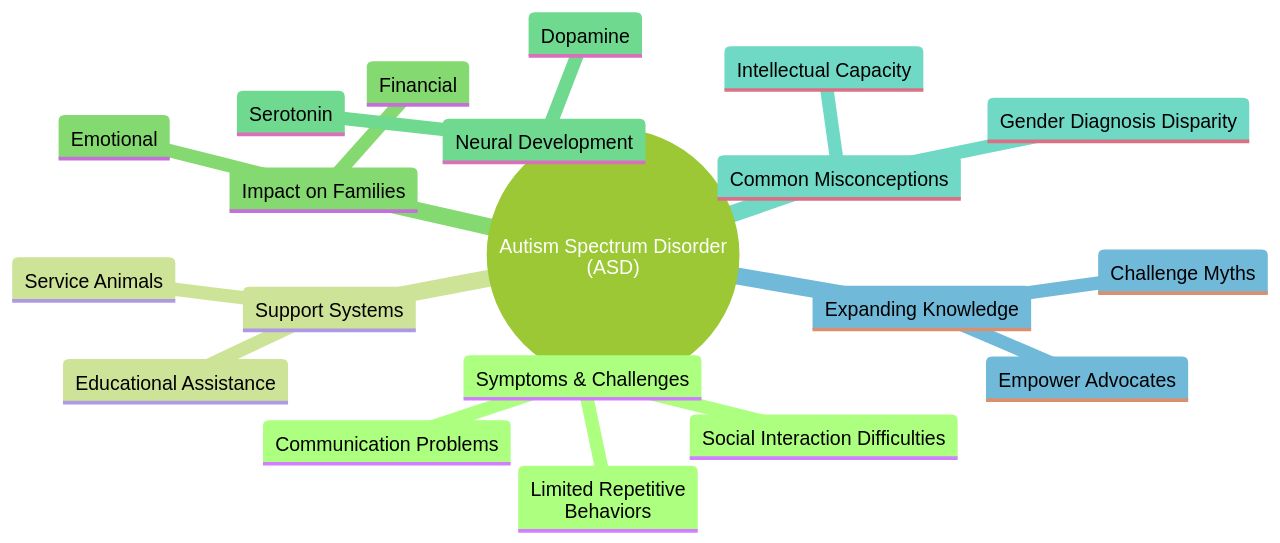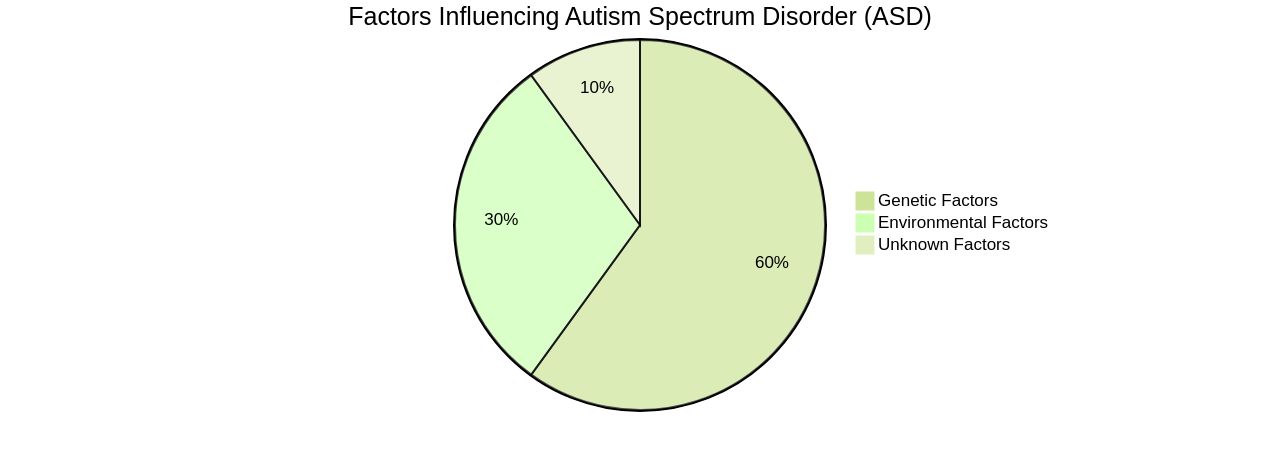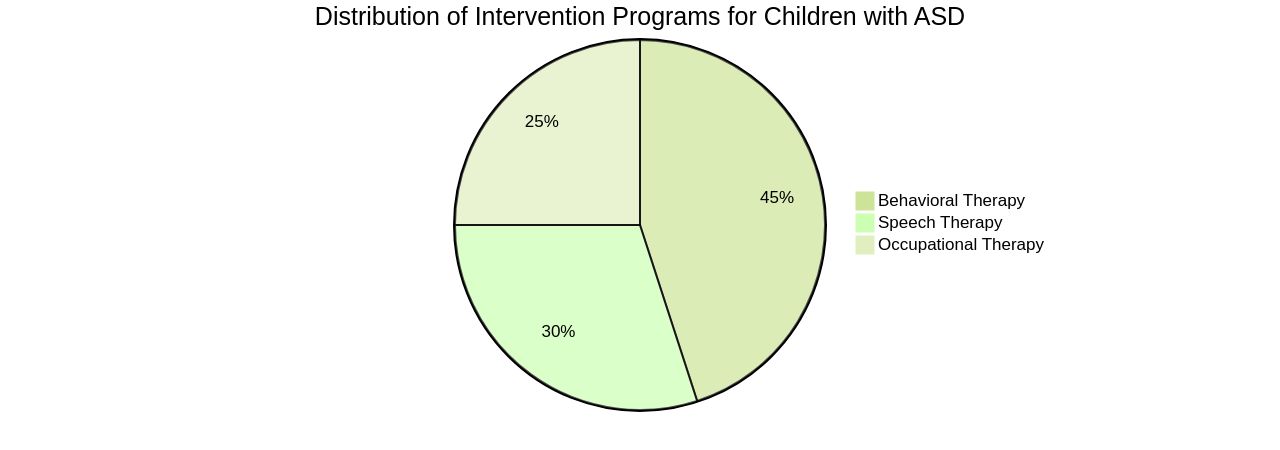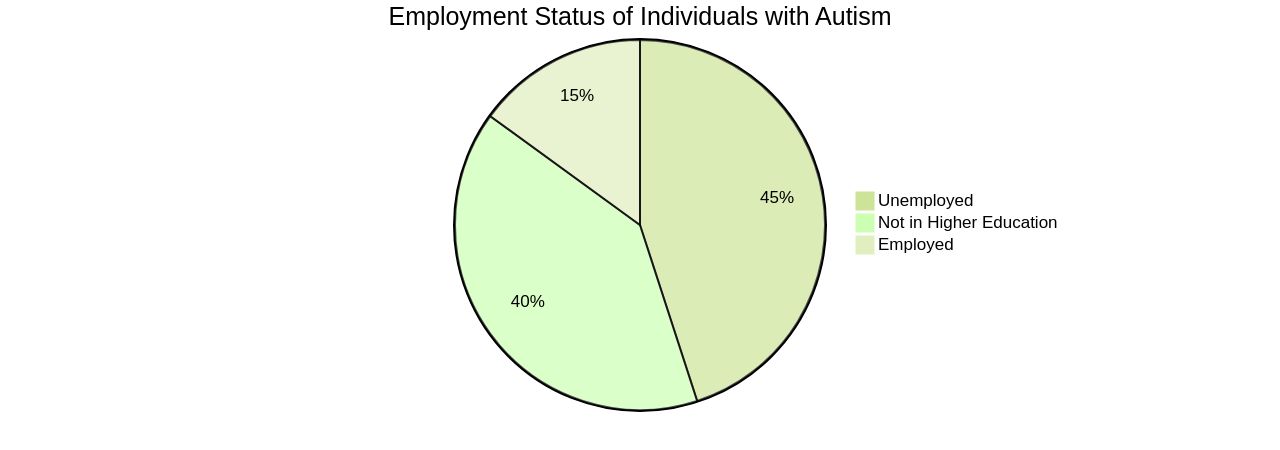Introduction
Autism Spectrum Disorder (ASD) is a complex neurodevelopmental condition that presents a diverse array of symptoms and challenges, which is why it's referred to as a spectrum. Each individual with ASD may exhibit a unique combination of characteristics, necessitating a nuanced understanding of the disorder.
In this article, we will explore the definition of ASD, the three core areas of the disorder, the importance of early intervention, and strategies for supporting individuals on the autism spectrum. Join us as we delve into the complexities of ASD and discover ways to empower and advocate for those with this condition.
Understanding the Spectrum
Autism Spectrum Disorder (ASD) is a complex neurodevelopmental condition that presents a diverse array of symptoms and challenges, which is why it's referred to as a spectrum. Each individual with ASD may exhibit a unique combination of characteristics, necessitating a nuanced understanding of the disorder. For instance, Amee Tompkins, who has ASD, found immense support in her Staffordshire bull terrier, Belle, who accompanied her to the hospital during labor.
Belle's presence was so beneficial that she was allowed in the ambulance and labor ward after passing a risk assessment. This is a testament to the wide-ranging impact of ASD and the profound influence of support systems, including service animals, on individuals with the condition. Service dogs, in particular, have been shown to foster resilience not just in the child with autism but across their entire family, enhancing emotional well-being and social interactions.
These findings are supported by a study highlighting that service dogs are integrated as family members, contributing to a more supportive family dynamic. Meanwhile, research from Chuo University and Osaka University delves into the mental functions associated with ASD, emphasizing the importance of understanding the brain's intricate connections to better comprehend the condition. With studies indicating the involvement of dopamine and serotonin in neural development, there is a continuous search for therapeutic targets that could revolutionize autism treatment.
For adults suspecting ASD, recognizing signs like challenges with social skills and repetitive behaviors is crucial, as symptoms can change with major life events. Misconceptions persist, such as the idea that ASD affects everyone similarly or that it's a mental health disorder, when in fact it's a neurological one that varies greatly among individuals. By expanding our knowledge and challenging myths, we can better support those on the autism spectrum in leading fulfilling lives.

Definition of Autism Spectrum Disorder
Autism Spectrum Disorder (ASD) is a complex developmental condition that presents significant social, communication, and behavioral challenges. It's a spectrum, meaning that while all people with ASD share certain difficulties, their condition will affect them in different ways.
Some people with ASD can live relatively independent lives, but others may need a lifetime of specialist support. It's important to note that ASD is not influenced by factors like vaccines, parenting practices, or diet.
Instead, it's believed to have a genetic component, as patterns of autism or related disabilities can be found within families, suggesting an inherited aspect. Despite extensive research, no single gene has been pinpointed as the cause.
Instead, scientists are exploring irregular genetic code segments that might be passed down, as well as environmental factors such as prenatal conditions or chemical exposures that could act as potential triggers in those genetically predisposed to ASD. Brain scans of individuals with ASD show variations in brain shape and structure, offering clues but no definitive answers.
Meanwhile, the role of service dogs for families affected by ASD is gaining recognition. These dogs can profoundly impact the social interactions and emotional well-being of a child with ASD and their family. Research indicates that service dogs provide a source of joy and can enhance resilience, reducing feelings of judgment and stigma. For adults diagnosed with autism, the need for support such as assistance dogs is becoming more apparent, with studies showing they are nearly three times more likely to face psychiatric conditions than children with autism. The growing demand for such support reflects an increased awareness and openness in discussing mental health challenges. Organizations providing assistance dogs are experiencing greater pressure than ever, emphasizing the vital role they play in supporting individuals and families living with ASD.

The Three Core Areas of ASD
Autism Spectrum Disorder (ASD) manifests in diverse ways, but common traits include challenges in social interaction, communication difficulties, and repetitive behaviors. For instance, a dog may have trouble maintaining eye contact, which is a notable sign of social interaction difficulty.
They might also find it difficult to interpret nonverbal cues, which can hinder their ability to form strong bonds with both humans and other animals. Communication issues may manifest as delayed vocalizations or a reluctance to engage in the typical 'back-and-forth' barking or play sounds that are characteristic of canine interaction.
Additionally, these dogs might exhibit repetitive movements, such as tail-chasing or pacing, and display intense, focused interests in specific objects or activities, much like humans with ASD who may have focused interests. Recent studies reinforce the idea that the impact of autism isn't limited to humans; it can affect animals, particularly dogs, as well.
For example, research has delved into the welfare of therapy dogs working with autistic children, revealing that these canines do not experience significant stress, based on saliva samples and behavioral observations. This is crucial, as it underscores the importance of the human-animal bond and the mutual benefits that arise from it, emphasizing the need to consider the welfare of both parties in therapeutic settings. The research collaboration between Canine Companions and the University of Arizona is pioneering in its exploration of a 'three-party' service dog placement, where the well-being of the dog is as much a priority as that of the child with autism and their family. This holistic approach is vital as we continue to learn about the profound effects service dogs have, not only on children with autism but also on adults who are increasingly being diagnosed with the condition and experiencing concurrent mental health challenges. The need for these service dogs is growing, reflecting a broader societal shift towards acknowledging and addressing mental health issues openly.
The Importance of Early Intervention
Understanding the early indicators of Autism Spectrum Disorder (ASD) is critical, and studies on high-risk infant siblings and retrospective analyses have contributed to this knowledge. Despite recognizing behavioral markers in the first year of life, the average age of ASD diagnosis remains around 3 years or older, delaying early intervention during a pivotal developmental period. Emphasizing the need for repeated monitoring of behavior over time, experts suggest prospective studies to detect early manifestations of ASD.
While there is a consensus on the importance of intensive treatment, family involvement, and generalization focus, there's a notable scarcity of comparative research on intervention programs, especially for children under three. Most existing programs cater to preschool-aged children and may not be widely accessible or known. According to the National Institute of Mental Health, routine screening for autism during well-baby checkups can identify early signs by 12–14 months, underscoring the need for integrating such practices into standard healthcare.
Moreover, research indicates that autistic children and young adults face a higher risk of early mortality, with the situation being more dire for autistic females and those with intellectual disabilities. This highlights the urgency for healthcare systems to better support individuals with autism. Thus, while there are many intervention strategies with empirical backing, the field lacks in-depth comparative studies, and a call for more research is evident to guide the development of early intervention programs that are both effective and accessible.

Supporting Individuals on the Autism Spectrum
Understanding the spectrum of autism is not just about recognizing a condition; it's about appreciating the diverse capabilities and perspectives that individuals with autism bring to our communities and workplaces. The stark reality is that, as of 2022, a mere 21% of individuals with disabilities, including autism, were employed, despite possessing valuable skills and a willingness to work.
This disparity is more pronounced among young adults on the autism spectrum, over half of whom face unemployment or are not engaged in higher education after high school—a rate that exceeds their peers with other disabilities. Companies that embrace inclusive employment by hiring neurodiverse individuals not only contribute to societal growth but also tend to see higher revenues, net income, and profit margins.
In fact, embracing a workforce inclusive of people with disabilities could potentially add up to $25 billion to the U.S. GDP. Creating supportive environments for individuals with autism means fostering their unique strengths, such as a keen eye for detail, deep expertise in specific subjects, and a profound sense of justice.
It's important to recognize the challenges they may face, such as the need to mask their natural behaviors to fit into societal norms—a response that can evolve from experiences of stigma and misunderstanding. Therapy and support can help to build on their inherent abilities, creating a more inclusive society. Recent initiatives, like those by The Arc of the United States and the United Health Foundation, aim to enhance mental health services and support for people with developmental disabilities. These efforts underscore the importance of coordinated care and increased public awareness to reduce stigma. Moreover, with early autism screening now possible in routine health care, children as young as 12–14 months can be identified and connected to support services, offering a brighter future for families and individuals on the autism spectrum.

Conclusion
In conclusion, Autism Spectrum Disorder (ASD) is a complex condition that requires a nuanced understanding. ASD is a spectrum, with each individual exhibiting unique characteristics.
Supporting individuals on the autism spectrum means recognizing their capabilities and creating inclusive environments. The core areas of ASD include difficulties in social interaction, communication, and repetitive behaviors.
Early intervention is crucial in identifying ASD and providing support during critical developmental stages. Embracing inclusive employment brings economic benefits and contributes to societal growth.
Creating supportive environments and providing therapy can help individuals with autism thrive. Recent initiatives aim to enhance mental health services and reduce stigma surrounding developmental disabilities. Early screening allows for early intervention, offering a brighter future for families and individuals with ASD. By understanding ASD's complexities, empowering ourselves with knowledge, and advocating for individuals on the spectrum, we can make a difference in their lives. Together, let us create a more inclusive society where individuals with autism can thrive and reach their full potential.




